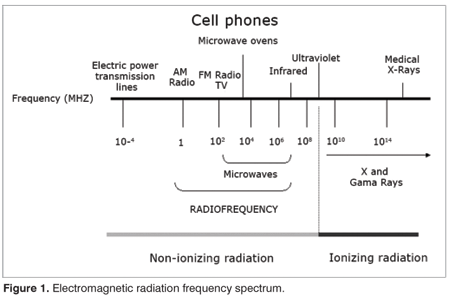
 image ©electroschematic.com
image ©electroschematic.com
In the Uk OfCOM are responsible for the allocation and oversight of the frequencies used for communications in the Uk. This covers radio, TV, mobile, and other radio communications. They initially allocate frequencies specifically for a 'generation' of mobile communications. Later on the companies have been given permission to use frequencies for different uses because of various factors including the relative demands on the frequencies. So what sets off as a very organised allocation does change over time. Also OfCOM re-allocates frequencies to be 'fair' to the companies as a result of takeovers and mergers.
Initially 2G was transmitted on 900MHz, allocated to Vodafone and O2, and 1800MHz allocated to Orange and T-Mobile, taken over by EE. Later O2 and Vodafone have been allowed to use their spare capacity at 900MHz for 3G. Some of the 1800MHz was re-allocated to O2 / Vodafone following the EE merger of Orange and T-Mobile. Also EE persuaded OfCOM to be allowed to use their spare capacity on 1800MHz for their first 4G operation.
3G was originally transmitted at 2.1GHz and the band shared between the five operators Vodafone, THREE, O2 and EE (Orange and T-Mobile). One 3G is switched off this whole 2.1GHz allocation will be able to be allocated where it is needed which could be extra frequency of 4G or 5G. The companies will have to liase with OfCOM on this re-allocation.
The original 4G frequencies were 800MHz which would provide the coverage over the UK and 2.6GHz which is used to add capacity. All operators have access to 800MHz frequency but only Vodafone and EE have access to the higher frequency. Three preferred to re-farm their 1800MHz allocation to 4G. O2 operate all their 4G network at 800MHz.
This split into coverage and capacity was repeated with 5G. 700MHz was is used to provide coverage and 3.4-3.8 for capacity. Vodafone decided not buy any 700MHz frequency as they had a lot at 800MHz / 900MHz which could be re-farmed. The higher frequency auction was more complex as THREE owned a lot of frequency 3.6 -3.8GHz following their purchase of UKBroadband and the requirement for each operator to have a continuous block rather than split blocks in this frequency range.
OfCOM are currently considering the release 26GHz and 40GHz for mobile phone operation. These mmWaves are different in nature to all other frequencies and are not suitable for 'normal' mobile phone operation. They do not travel far but have great capacity and are likely to be used in Industrial applications.
| 2G | 3G | 4G | 5g | |
|---|---|---|---|---|
| Three | - | 2.1GHz | 800Mhz 1800MHz | 700MHz 3.4-3.8GHz |
| O2 | 900MHz 1800MHz | 900MHz 2.1GHz | 800Mhz | 700MHz 3.4-3.8GHz |
| Vodafone | 900MHz 1800MHz | 900MHz 2.1GHz | 800Mhz 2.6GHz. | 3.4-3.8GHz |
| EE | 1800MHz | 2.1GHz | 800Mhz 1800MHz 2.6GHz. | 700MHz 3.4-3.8GHz |
© mobilephonetechnology.co.uk all rights reserved 2017-2025
